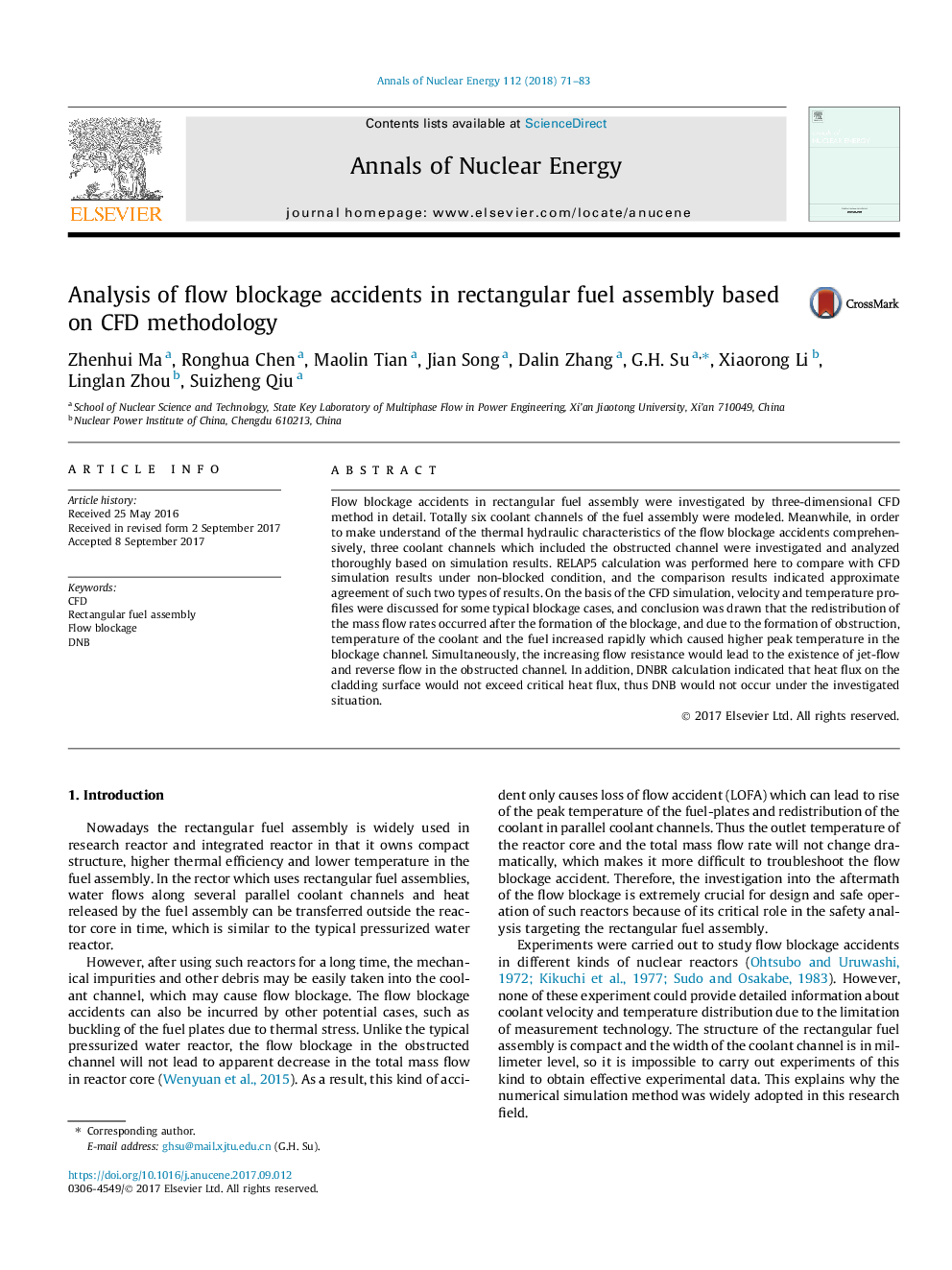| Article ID | Journal | Published Year | Pages | File Type |
|---|---|---|---|---|
| 5474750 | Annals of Nuclear Energy | 2018 | 13 Pages |
Abstract
Flow blockage accidents in rectangular fuel assembly were investigated by three-dimensional CFD method in detail. Totally six coolant channels of the fuel assembly were modeled. Meanwhile, in order to make understand of the thermal hydraulic characteristics of the flow blockage accidents comprehensively, three coolant channels which included the obstructed channel were investigated and analyzed thoroughly based on simulation results. RELAP5 calculation was performed here to compare with CFD simulation results under non-blocked condition, and the comparison results indicated approximate agreement of such two types of results. On the basis of the CFD simulation, velocity and temperature profiles were discussed for some typical blockage cases, and conclusion was drawn that the redistribution of the mass flow rates occurred after the formation of the blockage, and due to the formation of obstruction, temperature of the coolant and the fuel increased rapidly which caused higher peak temperature in the blockage channel. Simultaneously, the increasing flow resistance would lead to the existence of jet-flow and reverse flow in the obstructed channel. In addition, DNBR calculation indicated that heat flux on the cladding surface would not exceed critical heat flux, thus DNB would not occur under the investigated situation.
Keywords
Related Topics
Physical Sciences and Engineering
Energy
Energy Engineering and Power Technology
Authors
Zhenhui Ma, Ronghua Chen, Maolin Tian, Jian Song, Dalin Zhang, G.H. Su, Xiaorong Li, Linglan Zhou, Suizheng Qiu,
